Text
Grief, Bereavement, Public Health, & Me
I lost someone important to me in 2022.
This someone was the first love of my 30s. And someone who I can confidently say was one of the great loves of my life.
In public health, we talk about death. But we don't talk about grief or bereavement.
We aim to protect, preserve, and promote the health of individuals and their communities. We're terribly outcomes-driven in this respect—We want results.
But when these people die, we become fixated on the drivers of mortality. We ask: Why? How? When? Let's understand this type of mortality and, if possible, prevent it in the future.
We focus on the drivers of mortality because the outcomes are believed to be one and the same: they're dead. Nothing more to think about on that front.
We don't examine the health effects of this person's absence. We don't study the hole left behind in the family system or social sphere. We don't consider how this loss sends ripples across the kinship network. In any given community, the death of one person could impact the social, psychological, and material realities of many.
In this sense, it’s odd that we rarely think about death as an exposure with downstream health risks. I know firsthand that the health impact of death becomes utterly embodied during times of grief and bereavement.
cw: extensive discussion of suicide
It is puzzling that when we study mental health morbidity in LGBTQ+ populations, we only think of suicide as an outcome. An outcome with an uncomfortably high prevalence, especially for those who are multiply marginalized. But we never think of it as an exposure.
We don't think of attempted, completed, or ideated suicides as phenomena that have a dose-response relationship with the wider community's physical and psychological wellbeing. There’s some language around suicide triggering suicidality among others in the aftermath. But there remains low interest in investigating the cumulative effects of chronic exposure to suicide (attempted, completed, or ideated).
We don’t know how the intensity, frequency, or timing of it affects the health status of LGBTQ+ persons or communities. We don't ask how this particular violence factors into future wellness and quality of life.
So again: I lost someone important to me in 2022. We met at the juncture of my turning 30 while she herself was 35.
She had a long history of self-harm and suicidal ideation. As a teen, she tried to take her own life and was nearly successful. I learned this over the course of a year-long friendship that turned into a few weeks of dating.
It is a surreal thing to meet someone who is living on stolen time. They should be dead already, after all. It is so abstract, this sense of knowing that your ever meeting them is a miracle.
A miracle that they somehow got past age 17. That they lived past running away from home, across the country. That they lived past the Christian camp and conversion therapy. That they lived past the workplace violence (verbal). That they lived past the workplace violence (physical).
A miracle that they lived past the final utterances of family rejection. That they lived past the divorce steeped in deep wounding. That they lived past the ultimate betrayal of being given up on repeatedly.
And all of this was because they're LGBTQ+.
The chance to meet that kind of someone is a miracle. And the chance to love them feels like catching Halley's Comet in your hands. It is a once-in-a-lifetime burning and scarring of the skin, an exquisite pain you'll never know again.
You already know this or you come to know this.
And after this someone has passed through your life, you will want to whisper into the ear of every person mourning 'the years of life lost', 'the foreclosed future', and 'the life cut short', that this someone was never meant to age. That perhaps, this was the oldest that they ever could have possibly been.
Was this death actually premature considering the circumstances of this someone's life? Considering how long they lived on stolen time? It is a sobering thing to admit. But it is the most compassionate thing I've come up with.
It makes my own relationship with the future more tenable. It quiets the survivor's guilt enough to become tolerable.
A few days ago, Them published an article discussing The Trevor Project's 2023 U.S. National Survey on the Mental Health of LGBTQ Young People. Particularly, a dimension of the survey that yielded the research brief titled Perceived Life Expectancy and Life Purpose in LGBTQ+ Young People.
An excerpt from the article: "The report found that 36% of LGBTQ+ youth from 13-24 believed they had a low chance of living to age 35. [...] According to the report, young people who had reported having a suicide attempt in the last year were also more likely to report a low sense of life purpose and were less likely to believe they would live past age 35."
My someone died right after turning 36. She had posted online that she hoped her 36th spin around the sun would be the "least eventful" of her life. In the end, I only got to celebrate that one birthday with her.
I saw the Them article and didn't have much of a reaction. We have been living through historic times of death, dying, and loss since 2020.
By viewing death as an exposure, we can move to better understand the health consequences of grief and bereavement for all of us.
Bereaved persons have an increased risk of mortality, hospitalization, and clinical depression 0-6 months after a loss.
Bereaved persons may suffer from an array of symptoms affecting physical health (e.g. headaches, dizziness, indigestion, and chest pain), mental health (e.g. depression, anxiety, suicidal ideation, insomnia, and difficulty concentrating), and emotional health (e.g. distress, loneliness, and social withdrawal). (America's Lack of Bereavement Leave Is Causing a Grief Crisis, 2022; Stroebe, 2007).
By viewing suicide as an exposure, we can better understand grief and bereavement in the LGBTQ+ community.
In public health, Minority Stress™️ is a framework used to understand 'unexplainable' health phenomena that can only be chalked up to the stress burden of minority status. Minority Stress™️ seeks to understand how anticipated, perceived, and experienced victimization negatively impact the health of persons, driving health disparities and poor health outcomes.
The Minority Stress™️ model is heavily employed in the LGBTQ+ health literature and continues to be developed and iterated upon (Meyer, 2003). In simplified terms, Minority Stress™️ operates in the world through external minority stressors (stressors from outside the individual) and internal minority stressors (stressors from inside the individual). Key external minority stressors include stigma, discrimination, rejection from primary social supports, and violence. Key internal minority stressors include internalized homophobia, expectations of rejection, and identity concealment.
What's important is that Minority Stress™️ positions the stress burden of minority status as both an exposure and a mediating variable on pathways that produce health disparities. Suicide is both an external and an internal minority stressor that operates in this unique way within the LGBTQ+ community.
The sheer scale of pandemic-related death and grief in 2020 spurred psych professionals to add Prolonged Grief Disorder (PGD) to the DSM-5. It was formally added in March 2022.
For adults, a PGD diagnosis requires that the deceased has passed at least 1 year ago and that the bereaved experiences at least 3 of the following symptoms:
Identity disruption (such as feeling as though part of oneself has died).
Marked sense of disbelief about the death.
Avoidance of reminders that the person is dead.
Intense emotional pain (such as anger, bitterness, sorrow) related to the death.
Difficulty with reintegration (such as problems engaging with friends, pursuing interests, planning for the future).
Emotional numbness (absence or marked reduction of emotional experience).
Feeling that life is meaningless.
Intense loneliness (feeling alone or detached from others).
It is important to note that: 1) "An estimated 7%-10% of bereaved adults will experience the persistent symptoms of prolonged grief disorder" and 2) "The risk for prolonged grief is also greater when the death of the loved one happens very suddenly or under traumatic circumstances."
PGD is clinically-differentiated from normal grief as a "persistent, enduring, and disabling grief."
Society doesn't stop for normal grief or PGD. There is no federal mandate requiring employers to provide bereavement leave, paid or unpaid; schools and universities have no obligation either. A 2016 report conducted by the Society for Human Resource Management (SHRM) found that standard bereavement leave policies offer the following amounts of time off: 4 days for the death of a spouse or child; 3 days for the death of an immediate family member; 1 day for an extended family member; and 0 days for a friend or colleague.
0 days for my someone. 0 days for LGBTQ+ persons whose friends and partners (aka "chosen family") are their version of losing a spouse, child, or family member.
My someone died while I was in graduate school for my Master's in Public Health. Admin told me in no uncertain terms that I was to withdraw from my classes, take medical leave, and come back in one year. On the advice of a friend, I proposed that I would withdraw from one class and request an incomplete grade in another.
I needed to stay in school and I fought this fight alone. The School of Public Health made sure that my last 1.5 semesters would be an administrative and interpersonal nightmare. Yes, a School of Public Health.
My health deteriorated until one day I found myself standing in my living room, with my shoes on, ready to admit myself to the hospital; suicide hotlines, therapy, medications, all of it wasn't enough to stabilize me. I can now confidently say that an Intensive Outpatient Program (IOP) for LGBTQ+ adults saved me.
During that time, I struggled to explain why I was a tinderbox for grief. When my someone died, multiple LGBTQ+ friends shared with me their losses from the last year. When my someone died, multiple LGBTQ+ friends shared with me that they've been inpatient and/or did an IOP. When my someone died, I was saddened to learn how many of us were grieving alone, quietly.
In public health, a new concept is emerging called "disenfranchised grief," sometimes known as Stigmatized Grief™️ (Bristowe, 2016; Lucas, 2022). Stigmatized Grief™️ is a grief that cannot be shared openly because the person who passed was stigmatized by society, or the manner in which they passed was stigmatized.
My someone was a trans femme who committed suicide. There's no roadmap for grieving this person outside of the LGBTQ+ community; it was safer to grieve alone. I withdrew into myself and kept my distance from everyone.
After my someone's death, her biological family and ex-wife wanted to minimize LGBTQ+ attendees at her memorial. It now explains why I learned of the memorial through word of mouth. It now explains why the attendance was so small.
I didn't know this until after; until after I had hugged her sister and gave my condolences; until after I gave her ex-wife a ride in my car. I didn't know that her friends weren't allowed into her apartment to claim her belongings; I didn't know that my 36th birthday gift to her was being held hostage by the very people who had cut her out of their lives.
The bereaved parts of me are still reconnecting like severed nerve endings. After a long period of dormancy, the bereaved parts of me are coming alive again.
I can now let myself remember that final time she sat in the passenger seat of my car, my hand in her hand, then my hand on her knee. She declared that the first order of business in the fall would be to change the name on her passport. Halloween was her favorite holiday—her religious family never celebrated it growing up—and she was determined that we go to a pumpkin patch together, as she had never been to one.
She passed in October.
I remember fondly the final time I was at her apartment. We had dinner at a picnic table in the grassy yard of her building. We ordered Chinese food and lugged a cheap bottle of prosecco outside. It was summer. It was dark out. I was preoccupied with worrying about an errant raccoon coming over.
While I sat across from her, I told her this moment felt like we were college students meeting in the dining hall before summer break. It felt like we were friends newly connecting at the end of the semester, before one goes abroad. It's a goodbye with someone you were excited to have just met. And now you have to wait for them to come back.
In my journal entry about that night, I wrote (sic):
But something I’m trying to say is one of the last things I said at that picnic table is that it felt like I was saying goodbye to a friend who’s about to leave for study abroad. It had a summer vacation feel and it was literally summer but study abroad in that she was going on an adventure and to have a meaningful experience and to find herself, but somewhere else.
A few months ago, I sat with a friend to discuss the reality of grief: how painful the process is and how, so much, you just want to be okay.
But to get to that state of being okay means that you will no longer be in the process of losing. What you love will finally be lost. The process is done. What you love is gone.
I've only recently allowed myself to say the words: "I miss her."
I miss her. I miss her terribly.
I miss her and I'm trying not to grieve alone anymore.

#ptsd#grief#bereavement#dealing with grief#grieving#tw grief#tw death#cptsd recovery#cptsd#complex ptsd#ptsd recovery#tw ptsd#trauma#trauma response#trauma recovery#public health#healthcare#mental health#health and wellness#wellness#lgbtq#lgbtqia#lgbtq rights#lgbt#lgbtq community#queer#queering data#queer community#mental illness#mentally fucked
2 notes
·
View notes
Text
UNRWA and the Problem of Data Stewardship
Every single Registered Palestinian Refugee™️ took a grave risk to maintain their legal claim to their ancestral land. A deadly risk. UNRWA now stewards this data and all claim to land that Palestinians past, present, and future depend on.
Even if UNRWA wishes to deny that it grants any type of legal status, it cannot deny that it is stewarding validated data that Palestinians lived on their ancestral land before 1948.
---
Three weeks ago, I was digging into population data for Palestine.
Population pyramids offer a crude picture of health for a population, and unsurprisingly, Palestine's trends failed to show population stability. Due to premature death, many children do not age into adulthood and few adults grow old to become elders. Typically, members of a population only "exit" a population in two ways: 1) death and 2) physically leaving the geographic bounds that define this population. This leaving could be a willful emigration or a forced displacement.
It's one thing to locate data for death rates and survivorship curves. It's another thing to track down refugee data. For the Occupied Palestinian Territories (oPt as defined by the U.N.), refugee data is poorly defined and deeply political. And this data is stewarded solely by the U.N. Relief and Works Agency for Palestine Refugees in the Near East (UNRWA).
If it were the 90s, I would be slumped over a series of bloated desktops like Julia Roberts. *adjusts tin foil hat*



On January 26th, the International Court of Justice (ICJ) ruled that Israel could no longer act with impunity and had to immediately permit the delivery of basic services and essential humanitarian aid to civilians in Gaza. However, Israel has moved to accuse UNRWA staff members of conspiring with Hamas for the October 7th attack. The United States and Western nations have taken their cue to suspend funding to UNRWA.
To recap: now that the ICJ has ordered humanitarian aid to enter the Occupied Palestinian Territories (oPt), Western nations have cut funding to the U.N. arm delivering that very humanitarian aid in the region.
152 UNRWA workers have been killed and 145 UNRWA facilities have been damaged or destroyed. Over 1 million Palestinians are currently taking shelter in ~154 UNRWA buildings (via OCHA's reliefweb). Al Jazeera reports that the United States, Germany, the EU, and Sweden together fund ~62% of UNRWA's total funding. As these countries suspend their funding, it's predicted that UNRWA will run out of funds within weeks.
29 January 2024 statement from NGOs:
The suspension of funding by donor states will impact life-saving assistance for over two million civilians, over half of whom are children, who rely on UNRWA aid in Gaza. The population faces starvation, looming famine and an outbreak of disease under Israel's continued indiscriminate bombardment and deliberate deprivation of aid in Gaza.
We welcome UNRWA's swift investigation into the alleged involvement of a small number of UN staff members in the October 7th attacks. We are shocked by the reckless decision to cut a lifeline for an entire population by some of the very countries that had called for aid in Gaza to be stepped up and for humanitarians to be protected while doing their job. This decision comes as the International Court of Justice ordered immediate and effective action to ensure the provision of humanitarian assistance to civilians in Gaza.
152 UNRWA staff have already been killed and 145 UNRWA facilities damaged by bombardment. UNRWA is the largest humanitarian agency in Gaza and their delivery of humanitarian assistance cannot be replaced by other agencies working in Gaza. If the funding suspensions are not reversed we may see a complete collapse of the already restricted humanitarian response in Gaza.
Letting UNRWA sputter out and die has grave implications for Palestinian refugees past, present, and future. Why? UNRWA is the only recognized entity that grants Palestinians their legal claim to their ancestral land and their refugee status.
Piecing together the data on Palestinian refugees is Kafkaesque.
The U.N. Refugee Agency (UNHCR) operates in 135 countries and estimates that ~108.4 million people are forcibly displaced globally. However, UNHCR is a distinct entity from the U.N. Relief and Works Agency for Palestine Refugees in the Near East (UNRWA). The U.N. Refugee Agency (UNHCR) serves every single country but Palestine.
UNRWA was established in 1949 and is mandated to serve Registered Palestinian Refugees™️. Registered Palestinian Refugees™️ are defined as "any person whose normal place of residence was Palestine during the period 1 June 1946 to 15 May 1948 and who lost both home and means of livelihood as a result of the 1948 conflict" (UNRWA FAQs).
Registered Palestinian Refugee™️ status extended to biological and adoptive descendants of male lineage only. Registration closed after the 1950s and re-opened decades later in 1992 to allow new appeals for registration from persons "able to produce valid documentation proving their 1948 refugee status." Only in 2006 could Registered Palestinian Refugee™️ women have their own husbands and descendants registered as Registered Palestinian Refugees™️.
Census data has never been used to build UNRWA's registry of Registered Palestinian Refugees™️. All registered persons are registered voluntarily.
So here we are in 2024. The current database of Registered Palestinian Refugees™️ only captures individuals who voluntarily registered to maintain their legal claim to the land they were displaced from. Individual men who, from 1949 to 1959, had physical documents proving that they and their family lived in Palestine. Individual men who, over 40 years later, submitted physical documents (themselves or posthumously through their children) proving that they and their family lived in Palestine. Then, individual women, who almost 60 years later, submitted physical documents (themselves or posthumously through their children) proving that they and their family lived in Palestine.
Violence since 1948 has repeatedly displaced Palestinians. Most notably is the 1967 Naksa, when Israel annexed the remaining Palestinian territories after the Six-Day War. Though UNRWA serves Palestinians who have been displaced "as a result of the 1967 and subsequent hostilities," these persons are NOT Registered Palestinian Refugees™️ — they can receive services from UNRWA, but only persons and lineages connected to the 1948 Nakba fall under the definition of Registered Palestinian Refugees™️.
This wholly fucks up the numbers.
This data is hardly complete. It is miraculous that there are any Registered Palestinian Refugees™️ given how bureaucratically violent and prohibitive this process is. How do you present documentation when the registration window finally re-opened in 1992... if your entire family line was wiped out? How do you present documentation of where your family lived some 40 years after they were driven from their home with just the clothes on their back?
In public health, it has been widely studied and proven that stigma, violence, and distrust are durable drivers of surveillance avoidance. Victimized people will refuse to engage systems that capture any of their identifying information because of their fear of surveillance. They are, rightfully so, afraid of being revictimized by peoples and powers beyond them.
And so: Can you imagine having your home seized by a Western-backed nation, your family dying and suffering on a Trail of Tears, and then being asked to sign up for a Western-backed registry tracking your genetic family lineage?
Every single Registered Palestinian Refugee™️ took a grave risk to maintain their legal claim to their ancestral land. A deadly risk. UNRWA now stewards this data and all claim to land that Palestinians past, present, and future depend on.
Even if UNRWA wishes to deny that it grants any type of legal status, it cannot deny that it is stewarding validated data that Palestinians lived on their ancestral land before 1948.
UNRWA only operates in 5 regions: Jordan, Lebanon, Syria, West Bank (including East Jerusalem), and Gaza. It cannot operate outside of these regions. With that said, the U.N. is only tracking Registered Palestinian Refugees™️ who are internally displaced within the Occupied Palestinian Territories (oPt) or have crossed borders into one of these 5 regions.
Apparently the U.N. banks on Palestinians being unable to find resettlement outside of these 5 regions. From VOA News:
UNRWA does not have the authority to give Palestinians refugee status under the 1951 Geneva Convention. Nor does the U.N. High Commissioner for Refugees have that authority while they are in UNRWA's area of operations; it can designate Palestinians as refugees only when they are outside UNRWA's jurisdiction.
"The Refugee Convention was written such that it excluded [Palestinians] from protection and consideration by the UNHCR," Yael Schacher, director for the Americas and Europe at Refugees International, told VOA.
Unsurprisingly, there have been continued efforts to dissolve UNRWA. Doing so would transfer its mandate over to Arab powers within the 5 regions and subsequently dissolve the registry of Registered Palestinian Refugees™️.
In a 2021 letter, UNRWA's Director of Legal Affairs pens a letter "at the request of the United Nations High Commissioner for Refugees ('UNHCR') for the purposes of describing the Agency's mandate and services that it is able to provide, and limitations thereto."
The letter defines the purpose of UNRWA and the state of its funding as such:
UNRWA's fields of operations are Jordan, Lebanon, Syria, West Bank, including East Jerusalem, and Gaza. The Agency does not have a mandate to operate outside of its five fields, and therefore, other than maintaining regional representative offices, does not have offices anywhere else. UNRWA pursues its mission within its five fields of operations through the provision of humanitarian assistance and mandated services.
UNRWA mandated services are concerned with:
- Basic education,
- Primary health care,
- Relief and social services,
- Infrastructure and camp improvement, and microcredit, and,
- Emergency assistance, including in situations of armed conflict.
The Agency contributes to the protection of Palestine refugees both through its service delivery and by advocating for their rights with relevant stakeholders. UNRWA does not have a mandate to seek durable solutions for Palestine refugees.
UNRWA does not manage refugee camps and is not responsible for protecting the physical safety or security of Palestine refugees or maintaining law and order in UNRWA's five fields of operations. The Agency cannot guarantee any individual's physical security. Ensuring the physical security of Palestine refugees residing in any of UNRWA's five fields is the responsibility of the respective host state or authority.
[...]
Operating within a resource-constrained environment, and reliant on voluntary funding, UNRWA allocates its limited resources among the services provided to Palestine refugees, prioritizing the needs of the most vulnerable. The level of services that UNRWA is able to provide depends on the Agency's funding situation, which is largely dependent on voluntary contributions by States, and may not correspond to the needs of Palestine refugees. The Agency's funding situation, which has steadily deteriorated over the past several years, reached a critical point in 2020. UNRWA received US$ 940 million, US$ 649 million short of total requirements and US$ 60 million less than in 2019. The Agency's financial situation remains uncertain with a shortfall of US$ 100 million as at mid- September 2021.
As stated, UNRWA does not operate or fund refugee camps, as they can only deliver services; refugees become the financial responsibility of the host nations. Thus, pushing Registered Palestinian Refugees™️ across borders is to the advantage of UNRWA in a few ways. If Registered Palestinian Refugees™️ are pushed outside of UNRWA's 5 regions, through the Rafah crossing into Egypt let's say, then UNRWA washes its hands of these refugees from both a financial and jurisdiction standpoint.
To reiterate from before: At least 152 UNRWA workers have been killed and most of UNRWA's physical infrastructure has been blown up and destroyed. Over 1 million Palestinians are taking refuge in remaining UNRWA buildings. Nations that account for ~62% of UNRWA's total funding and are now suspending their funds one-by-one. It's predicted that UNRWA will run out of funding within weeks.
Sounds like a convenient solution for the problem of Registered Palestinian Refugees™️. And again, this brings up concerns regarding data stewardship.
If UNRWA dies, then all Palestinians would be absorbed into the umbrella title of Internally Displaced Persons™️ (IDP) -- forcibly-displaced persons who do not cross borders. "People become internally displaced when they are forced to leave their homes due to conflict, violence, human rights violations, natural hazards, or other crises within the borders of their country. This can include situations where people move voluntarily to seek safety or to access essential services" (via OCHA).
IDP is a regionally-agnostic and globally-used term, as opposed to Registered Palestinian Refugee™️. The U.N. body primarily concerned with IDPs is the Office for the Coordination of Humanitarian Affairs (OCHA). Defined solely by geographic bounds, IDPs are not refugees, even if they've been displaced for generations. Those IDPs are just experiencing protracted internal displacement: "Protracted Internal Displacement refers to IDPs who, for significant periods of time, cannot take steps to progressively reduce their vulnerability, impoverishment and marginalization, and find a durable solution" (United Nations Secretary-General’s High-Level Panel
on Internal Displacement, 2021).
There is a current movement to apply the term IDP to Palestinians. On one hand, it's accurate and helpful in garnering resources. On the other hand, it further erodes the UNRWA classification of Registered Palestinian Refugee™️.
The Internal Displacement Monitoring Centre (a Norwegian organization) put out an interesting report in 2015 regarding this language shift and foreshadows a mandate shift for UNRWA:
Until 2006, local NGOs, INGOs and the media generally referred to Palestinians displaced by house demolitions and evictions as "homeless", not as IDPs. At that time, some did not see the utility of the IDP label, especially given that the status of Palestinian refugee used by the United Nations Relief and Works Agency for Palestine Refugees in the Near East (UNRWA) conferred some degree of assistance to Palestinians. Over time there has been growing recognition of the validity of the IDP label in Israel-Palestine and its potential to ensure greater visibility.
This new awareness of internal displacement and its triggers and consequences in the region was reflected in the 2008 creation of the Inter-Agency Displacement Working Group (DWG) led by OCHA under the auspices of the Protection Cluster chaired by OHCHR. It rapidly grew to include over a hundred members, including UN agencies, Palestinian and Israeli local organisations, INGOs and donors. They collectively acknowledged the local applicability of the IDP definition provided by the Guiding Principles and started considering as IDPs all Palestinians, including UNRWA-registered refugees, who have been displaced as a result of policies associated with the Israeli occupation of the territories annexed in 1967. Accompanying this conceptual shift there has been increasing recognition of the applicability of the term "forcible transfer" to describe Israeli practices in the oPts.
Without UNRWA's registry of Registered Palestinian Refugees™️, the public identity of Palestinians will irrefutably change. Both in the region and on the world stage.
Just another internally displaced person. Just another refugee. Displaced from where? Refugee from where? Not any place that they have claim to, legally or anecdotally; not any place that they have power to return to.
This is the problem of data stewardship that needs to be answered.
Anyways, a depressing rabbit hole I found myself in.

#statistics#population health#anti zionisim#antisemitic#antisemitism#colonization#ethics#free gaza#fuck israel#gaza genocide#gaza#gaza strip#gazaunderattack#palestine genocide#israel#free palestine#palestinian genocide#israel palestine conflict#palestine#icj genocide case#genocide#ethnic cleansing#human rights#endisraelsgenocide#stop the genocide#unrwa#unrwafunding#israel hamas war#hamas#displacement
6 notes
·
View notes
Text
bcc: Concerns regarding flag emojis
Hello everyone,
My name is Dr. Tabatha Kofi (she/her) and I'm beyond excited to join the Dumb CDC community as Interim DEI Director. I recently completed my post-doctoral fellowship at Do No Harm and am eager to do great work with all of you here.
I want to think of my tenure at Dumb CDC as my own Tabatha Takes Over™️ but much more fun for all of us! 😊
This first company-wide email is to request compliance in removing flag emojis from all Slack names and statuses by EOD January 31st.
Because of yesterday's ruling by the International Court of Justice, leadership called an emergency meeting to discuss the use of flag emojis on Slack.
It has been brought to my attention that flag emojis represent countries (e.g. 🇺🇦 = Ukraine, 🇺🇸 = USA, 🇨🇩 = ???) and that displays of nationalism can make employees uncomfortable during times of alleged genocide. As you may know, the lawsuit issued by South Africa 🇿🇦 has great implications for the current conflict in Israel 🇮🇱 and Palestine 🇵🇸. So, no more flag emojis.
We additionally discussed the use of flag emojis like the LGBTQIA+ flag 🏳️🌈 and the pirate flag 🏴☠️. To ensure fairness to all identities represented in our diverse workforce, no flags of any sort will be permitted to be used on Slack. This also includes the golf emoji ⛳️ and mailbox emoji 📫 as these technically include flags.
Until it is determined which countries are and aren't involved in active genocides, any use of flag emojis will be escalated to HR.
Thank you for your cooperation ☮️🦋
Yours In Solidarity,
Tabatha (she/her)
#dank humor#free gaza#ethics#human resources#slack#emoji#flags#pride flag#anti zionisim#antisemitic#antisemitism#colonization#fuck israel#population health#statistics#icj#icj hearing#icj case#icj ruling#icj genocide case#international court of justice#south africa#endisraelsgenocide#genocide convention
1 note
·
View note
Text
the Standpoint of being "Chosen"
It is a journey into distortion to understand the positionality of Evangelicals and Zionists, and their ideological siblings in MAGA under Trump and Hindutva under Modi.
This is a positionality not often discussed in Standpoint Theory™️, which posits that all knowledge of the self and the world is informed by social position.
Black feminists like Patricia Hill Collins describe Standpoint™️ as the place where one finds themselves within a 'matrix of oppression'—an individual's standpoint is located at a unique nexus of the intersecting systems of race, gender, and class. When this standpoint is located outside of hegemony, you have a clearer vantage point of the cogs in the greater machine and the contours of these intersecting oppressive systems. From these standpoints, we can better see the violent churn of bureaucracy down to the interpersonal mechanisms of violence.
What happens, then, when the 'matrix of oppression' is replaced with a 'matrix of exceptionalism'? A matrix where entities believe that they sit at the centermost nexus of race, gender, and class systems, a standpoint nestled within hegemony rather than one thrown to a distal area from it. A matrix where the resulting standpoint is one of being "chosen."
Not just exceptional by ordinary standards, but "chosen": singularly "chosen" by God and Nation. Now that is a data validation conundrum.
How does this standpoint of being "chosen" understand equality, equity, or justice? Human rights or humanness itself?
When trying to understand this, I think to a scene from the miniseries Midnight Mass. The series follows a congregation "chosen" by an angel (sorta vampire?) that is now tasked to decide which church members should survive to see the New World Order. A show 100% about epidemiological investigation (ie new incidence of vampires), featuring communicable and zoonotic diseases.
The scene is Annie (neighborhood mom) speaking to Bev ("chosen" church leader, vampire) after much of the town has been sacrificed for the New World Order.
Annie to Bev: God doesn't love you more than anyone else. You aren't a hero. And you certainly, certainly aren't a victim.
Bev: I wouldn't lecture Annie Flynn. [...] (Gives a bitchy read of Annie's parenting skills because her sacrificed* son killed a child during a DUI.)
Annie: And God loves him. Just as much as He loves you, Bev. Why does that upset you so much? Just the idea that God loves everyone just as much as you. (Get her Jade!)
In the 'matrix of exceptionalism,' how does one conceptualize love from God and Nation? God and Nation can certainly love beings that aren't equal to the "chosen." God and Nation can certainly love them less. The love itself does not have to be equal.
Meanwhile, in the 'matrix of oppression':


*see above
All this to say: those of us scattered across the 'matrix of oppression' can look at hegemony and have an outside vantage point of the Master's House™️ per se (coined by Audre Lorde).
I believe that those inside the Master's House are scattered across the 'matrix of exceptionalism.' Nestled within hegemony, they have a proximity to something else.
And perhaps through a keyhole, a crack in the door, a few inches between the window pane and sill, we on the outside see what it is:
The Cuckoo Clock in Hell™️
This is how Kurt Vonnegut describes the innermost mind of the far-right in his 1961 book Mother Night. This mind is a machine so fundamentally broken, random, and pointless, that it functions only enough to simply keep its shoddy machinery operating and whirling.
Ostensibly able to 'make the trains run on time,' but always in a super fucked up way.*
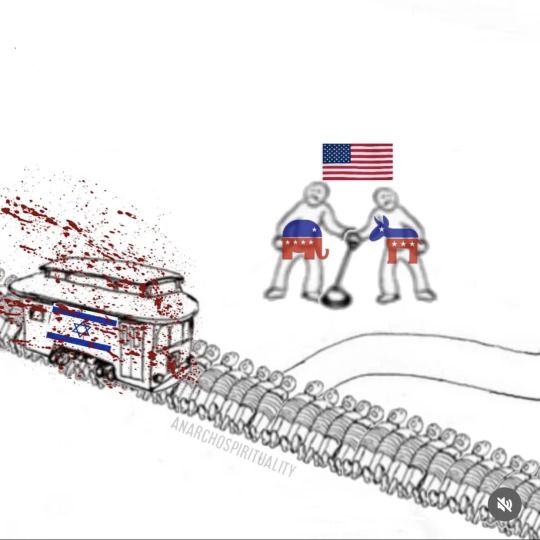
*see above
In Vonnegut's words:
I have never seen a more sublime demonstration of the totalitarian mind, a mind which might be linked unto a system of gears where teeth have been filed off at random. Such snaggle-toothed thought machine, driven by a standard or even by a substandard libido, whirls with the jerky, noisy, gaudy pointlessness of a cuckoo clock in Hell. [...]
[The far-right] wasn't completely crazy. The dismaying thing about classic totalitarian mind is that any given gear, thought mutilated, will have at its circumference unbroken sequences of teeth that are immaculately maintained, that are exquisitely machined. Hence the cuckoo clock in Hell - keeping perfect time for eight minutes and twenty-three seconds, jumping ahead fourteen minutes, keeping perfect time for six seconds, jumping ahead two seconds, keeping perfect time for two hours and one second, then jumping ahead a year.
The missing teeth, of course, are simple, obvious truths, truths available and comprehensible even to ten-year-olds, in most cases.
The willful filing off of gear teeth, the willful doing without certain obvious pieces of information - [...]
That was how my father-in-law could contain in one mind an indifference toward slave women and love for a blue vase -
That was how Rudolf Hess, Commandant of Auschwitz, could alternate over the loudspeakers of Auschwitz great music and calls for corpse-carriers -
That was how Nazi Germany could sense no important difference between civilization and hydrophobia -
That is the closest I can come to explaining the legions, the nations of lunatics I've seen in my time.”

^^ a cuckoo clock, not pictured in hell
In respect to Black Lives Matter, Trans Rights, and Palestine, those of us glimpsing inside the Master's House through a keyhole or opening have seen the faces of friends, family, and community members in there.
More often than not, I see white queers speaking Zionist rhetoric while staring directly into the Cuckoo Clock in Hell™️ --
They agree with it. On the same day pro-Palestine protestors shut down the Brooklyn Bridge, Manhattan Bridge, Williamsburg Bridge, and Holland Tunnel using ACT UP's 1995 "bridges and tunnels" protest techniques. On the same day over 400 persons were arrested for this act of defiance. On the same day ACT UP NY announced fully-funding bus tickets for the ACT UP block going to the January 13th March on Washington.
I see white queers agree with the Cuckoo Clock in Hell™️ and listen to its dissonant whirling. To them, I want to ask: Why do you feel so safe inside the Master's House? You will eventually be evicted, displaced, and discarded. Do you actually believe you are "chosen," a credit to your kind?
When I think of Palestine as a Standpoint™️, I think of what the Castro district of San Francisco, CA has come to mean for queers across the nation (and even globally).

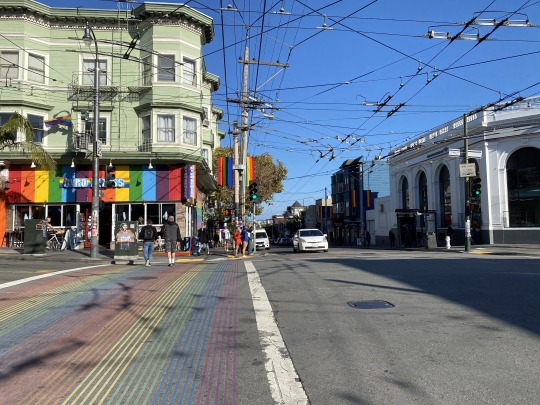
^^ photos taken by me, 2023
When you're in the Castro, you know you're in Castro-- Rainbow crosswalks, rainbow banners on lampposts, a historic 'rainbow walk' with plaques dedicated to famous LGBTQ+ figures, and a giant rainbow flag (20ft x 30ft) flying over Harvey Milk Plaza.
The SF AIDS Foundation has a beautiful multi-story wellness center serving the community. The historic Twink Peaks Tavern sits atop Castro St.; its large panoramic windows were uncovered in 1973, making it the first gay bar to stop hiding its patrons from the public.
The graffiti says 'Protect Trans Kids' and 'Dykes Hate Techies.' There is an ease around queer public displays of affection and sexuality. The Castro 'Welcome Center' plays Kim Petras' album Slut Pop over the sound system.
youtube
The historic Castro theatre visually distinguishes the neighborhood's main drag from anywhere else.
Harvey Milk's old photo shop is now an art space called Queer AF.
Dildos are in a fair amount of store windows. And you will probably pass a nudist on your morning coffee run.
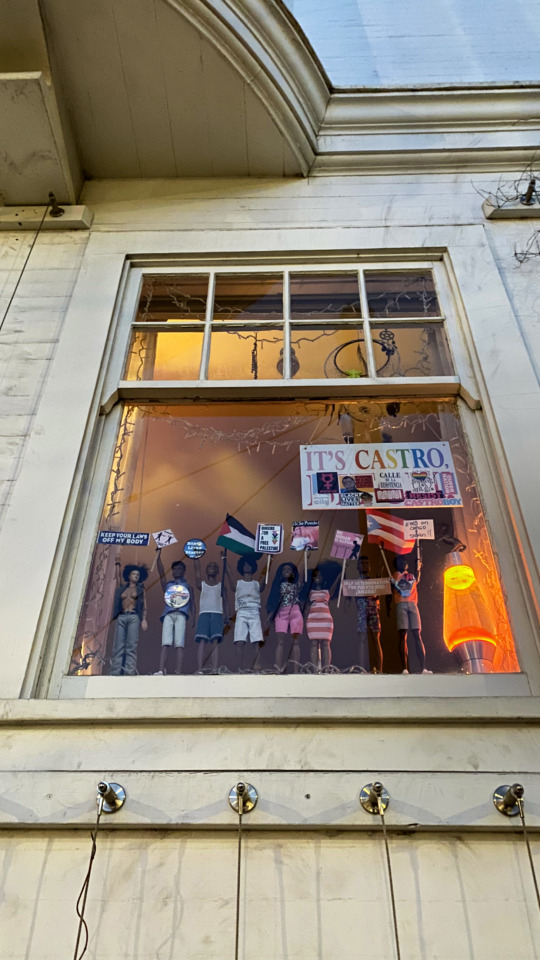
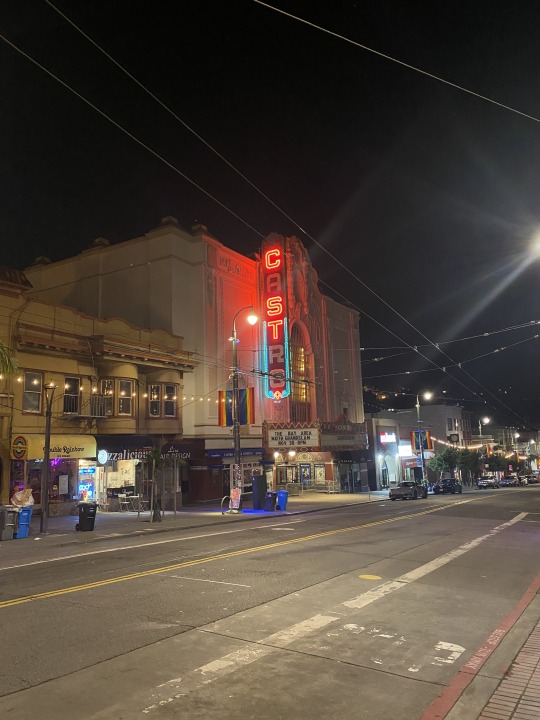
^^ photos taken by me, 2023
The Castro's response to Palestine was immediate and visible.
After Israel's retaliation to Hamas' October 7th attack had begun, Palestinian flags went up in storefronts. Sandwich boards said 'Free Gaza' and 'Let Gaza Live.' Messages of solidarity were written on printer paper and taped to windows. Residents hung Palestinian flags out of their apartment windows. We marched to the Civic Center.
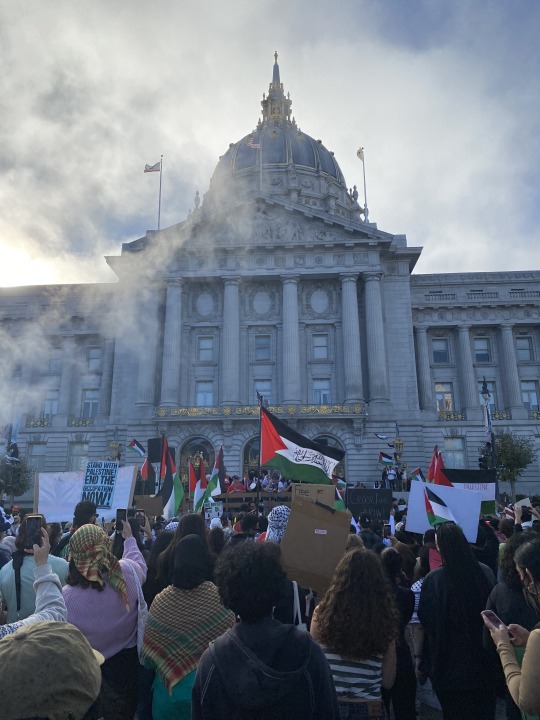
^^ photo taken by me, 2023
And so, when I see white queers parroting the Cuckoo Clock in Hell™️, I want to ask: What would it mean for the queers of Castro to become forcibly displaced?
Would it be a stretch of the imagination for windows to be broken, residents to be threatened, stores to be trashed, or pedestrians to be beaten?
Would it be a stretch of the imagination for the few franchises among the queer-owned local businesses to pull out of the neighborhood with enough political pressure?
What if you heard that queer residents on the outer blocks of Castro had their homes bricked. They left in fear. The city quickly seized the property. Squatters and developers moved in. The violence may move inwards towards the heart of the neighborhood.
Now more people want these dykes, fags, trannies, groomers, pedophiles, and perverts out of here.
And they found a system for doing so.
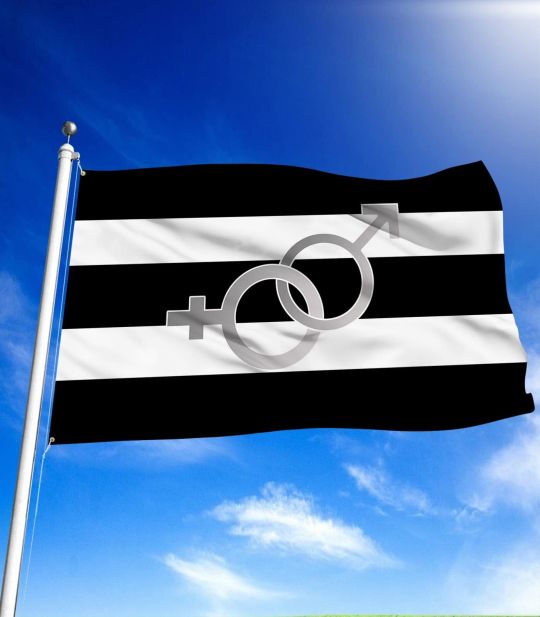
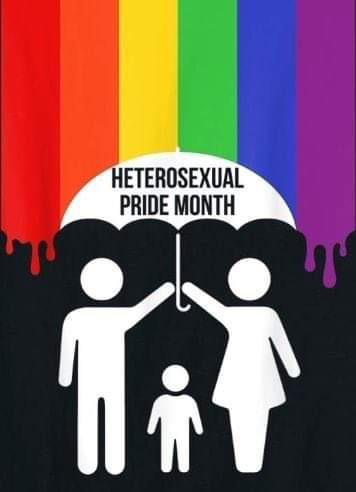
^^ graphic design is their passion
So let's just stop here. This is the most benign level of forced displacement. This will not create refugees or a humanitarian crisis. This isn't even on par with raiding gay bars like in the good ol' days.
This isn't police beating up queers in the street or arresting them for now being 'unwanted traffic' in public space. This isn't vigilantes telling "the queers" to get out of their homes and businesses at gunpoint. This isn't throwing all of your belongings out of the window and into the street.
This isn't making flying the LGBT flag illegal.
This isn't tearing down the sign for Harvey Milk Plaza.
This isn't defacing the Castro Theatre.
This isn't even a loss of life.
This isn't even war.
I want to posit this to all the white queers fixated on the Cuckoo Clock in Hell™️. I want to ask why they feel safe from state violence that, given the current anti-LGBTQ+ landscape, is only one move of the needle away.
When you are no longer "chosen," how will you return to and face your community again? And better yet: can you? We protect us, after all.
This article is dedicated to you.
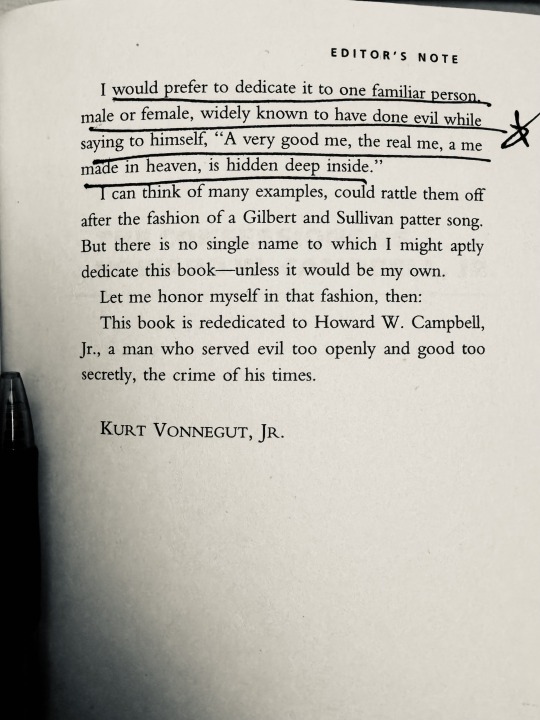
#kurt vonnegut#mother night#anti war#anti zionisim#antisemitic#antisemitism#colonization#ethics#free gaza#lgbt#lgbtq rights#lgbtq community#lgbt pride#lgbtq#castro district#san francisco#refugees#displacement#fuck maga#trump indictment#fuck modi#fuck trump#fuck israel#fuck evangelicals#midnight mass#rahul kohli#larry kramer#act up#activism#human rights
2 notes
·
View notes
Text
Horton Hears a Commitment to Listening, Learning, and Growing
From the desk of the Chief Operations Officer of Dumb CDC:
The hard-working Ethics and Compliance Activity team here at Dumb CDC has published their 2023 audit of our organization. Though we no longer meet the Corporate Equality Index criteria that has long guided our vision of diversity, equity, and inclusion here at Dumb CDC, we remain positive about the report's findings.
With each new year comes new experiences, new challenges, and new opportunities. We see Q1 of 2024 as an opportunity to do better. An opportunity to learn and grow from internal investigations. And better yet, an opportunity to reinstate a salaried DEI Director. We believe that this is the right thing to do.
We are facing trying times as public health professionals. The discourse around Black Lives Matter, Transgenderism, and Palestine has entered the workplace, creating an unsafe and uncomfortable environment for many.
To navigate these conversations, our executive leadership has read and discussed Horton Hears A Who! We take this as a serious step towards understanding the complex identity politics we are facing today, both personally and professionally.
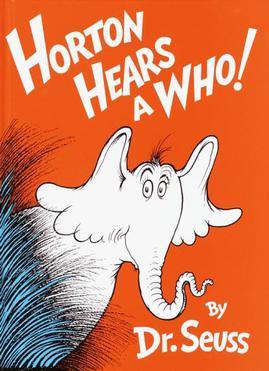
Some of our peers have called racism a "public health emergency" and transgender health a "flashpoint" for health ethics. The conflict in Palestine has caused division within the field with difficult questions such as: Is bombing a maternity ward bad for maternal and reproductive health?
We believe that Horton Hears A Who! provides a helpful framework for addressing these divisive issues as public health professionals.

Colleagues immersed in identity politics often take the social dimensions of public health to their logical extreme. Like Horton, they see the "small speck of dust" and immediately accept as truth that the microscopic Whos exist there and that Whoville is a place where they live, learn, work, play, and age. They take the Whos' words at face-value because they too easily sympathize with them.
It is important as public health professionals to remain skeptical until clear data is presented. To much criticism and pushback, like the kangaroos we say: "Why, that speck is as small as the head of a pin. A person on that?... Why, there never has been!"
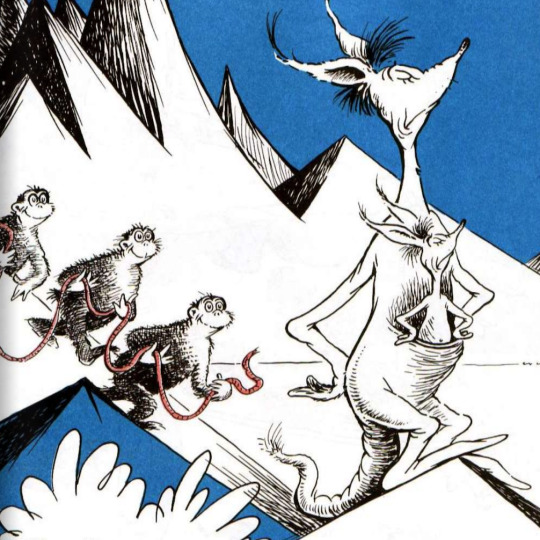
Horton's bias towards the Whos is to their detriment. He takes an unprofessional interest in them, saying: "My friends! Tell me! Do tell! Are you safe? Are you sound? Are you whole? Are you well?"
Getting information straight from the Whos is inappropriate. There is no credible census, let alone public health surveillance, available in Whoville. The monkeys know that much.
Everyone in the jungle calls Horton foolish. The kangaroos and monkeys depose Horton and move to boil the speck of dust. They understand that no data is better than bad data.

Horton protests: "Boil it? Oh, that you can't do! It's full of persons! They'll prove it to you!"
The Whos protest and cry out in fear: "We are here! We are here! We are here! We are here!"
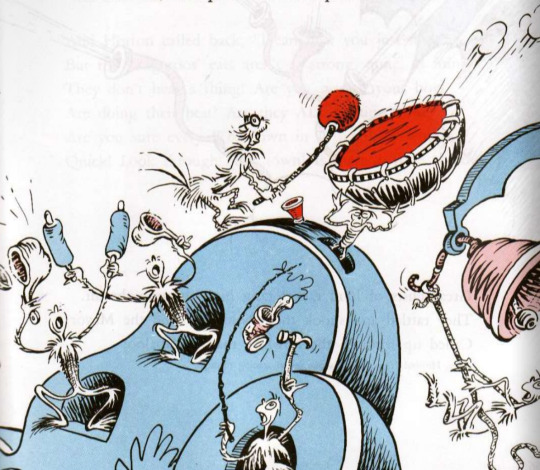
Horton goes so far as to make the unfounded claim that "a person's a person, no matter how small."
As an esteemed public health institution, we must remain steadfast in listening to the data before making such a bold political statement. Horton has been getting all of his information directly from the Whos after all.
In the story, Horton has to prove his claim that "a person's a person, no matter how small." He does so through the empirical evidence of the desperate screams of the Whos in Whoville-- including the smallest of children.
Through this good effort, the kangaroos and monkeys can finally hear the voices of the Whos in Whoville.
Mechanisms could now be put in place to recognize and protect the Whos. That is because they and their unique suffering were now proven to exist.

To our colleagues fomenting political unrest and criticizing leadership here at Dumb CDC: know that intellectually and politically, we may not be so far apart on these issues. Like the kangaroos and monkeys, we may see more eye to eye one day. But we will do so through the proper processes, which take time, rigorous work, and patience.
Horton rushes ahead, but the kangaroos and monkeys are committed to listening, learning, and growing. No matter how long it takes. And maybe we could all learn something from that.

#genocide#nakba#palestine#statistics#population health#population statistics#ethics#rights#free gaza#stop the genocide#free palestine#save gaza#social justice#palestinian liberation#human rights#anti zionisim#fuck israel#colonization#imperialism#islamophobia#antisemitism#antisemitic#racial justice#black lives matter#transgender#transgender rights#trans rights#trans rights are human rights#blacklivesmatter#diversity
0 notes
Text
vimeo
The Onion. From 2010 but essentially the news in 2023. Bless Vimeo for not age-restricting it ✨
0 notes
Text

meme created by a PhD who calls it "an evil tome."
#statistics#dank humor#designing women#political science#research#qualitative research#graphic design
0 notes
Text
Genocide: A Working Definition
Dumb CDC welcomes you to enjoy our timely upcoming series Genocide: A Working Definition. We hope to promote conversation through this collection of diverse essays by recognized figures in places.
After 2 months into Israel's siege on Gaza, members of the UN have called for a humanitarian ceasefire. First on December 8th, where the US vetoed the Security Council vote, and then on December 12th, where 153 members of the UN General Assembly voted in favor of ceasefire. The aim of the ceasefire is to allow for humanitarian aid and recovery in the occupied Palestinian territories (oPt as defined by the UN).
At this moment, Palestine is experiencing a third telecommunications blackout. 9 out of 10 people cannot eat each day. Succumbing to wounds, injury, and disability is an imminent risk-- 14 hospitals are operating and only partially. The complete closure of food, fuel, water, and medical channels is part of Israel's "collective punishment" against the civilian population. Punishment that is considered separate from the indiscriminate airstrikes, bombings, and raids.
In under 70 days, the explosive power of 3 atomic bombs have been dropped within the 141 square miles of Gaza. That would be the equivalent of the city of Atlanta, GA experiencing the horror of Hiroshima 3 times over.
And so, people are finding themselves asking: Is this genocide? Yes, people are still asking themselves this.

We here at Dumb CDC understand that historical continuity is a difficult concept. We also understand that everyone has developed their own yardstick for measuring genocide in 2023.
On December 6th, Euro-Med Human Rights Monitor reported a civilian death toll of 21,731 civilians. In these figures, children are 40% of all deaths (n = 8,697). These numbers do not include adults and children who are missing or have an unknown status.
The simplest assessment of the value of Palestinian life would be a correlation between Palestinian civilian deaths and Hamas militant deaths (Israel's measure of military success).
On December 6th, CNN reported that 5,000 Hamas militants were confirmed dead by Israel:
1.74 living children + 2.60 living adults = 1 dead Hamas
2 living children + 3 living adults = 1 dead Hamas
*round up when the units are humans
On December 15th, Reuters reported that 7,000 Hamas militants were confirmed dead by Israel:
1.24 living children + 1.86 living adults = 1 dead Hamas
2 living children + 2 living adults = 1 dead Hamas
*round up when the units are humans
And before you say "but is this genocide?", please know we anticipated this question. Obviously there are confounds we simply cannot account for in this complex situation.
We acknowledge that this is an overestimation of the value of human life in Palestine. Additional things must be destroyed to yield 1 dead Hamas. We still need to factor in the destruction of the built environment, healthcare systems, sanitation systems, food systems, and natural resources of the population (among other things). It is difficult to place a value on heritage sites, historical landmarks, and places of worship, but these together do yield 1 dead Hamas.
Human rights monitoring has been greatly disrupted. And in under 70 days, 90 journalists providing on-the-ground coverage of the war have been killed by airstrikes and snipers (v. 69 killed during the entirety of WWII; v. 63 killed during the entirety of Vietnam). We understand that this puts further limitations on our data.
We cannot confidently make inferences about the real value of human life in 2023 until more data becomes available. Until then, Dumb CDC remains committed to measuring genocide in units of population health indicators to inform a new, working definition.

#genocide#nakba#palestine#statistics#population health#population statistics#ethics#rights#revolution#ceasefire#gaza genocide#free gaza#stop the genocide#gaza strip#free palestine#save gaza#israel palestine conflict#social justice#palestinian liberation#human rights#anti zionisim#fuck israel#colonization#imperialism#islamophobia#antisemitism#antisemitic#antisemites#ableism#racial justice
3 notes
·
View notes
Text
Point: Oregon is the queerest state in the US.
Counterpoint: No.
Pink News published an article on Monday (12/11) regaling us with the promise of "new data released by the UCLA's Williams Institute."
New data! Queer reveals! Shocking results!
The data in question was from the 2020-2021 Behavioral Risk Factor Surveillance System (BRFSS). It was at this point that we here at Dumb CDC lowered our champagne glasses.
Since 2014, BRFSS has been the nationally-representative survey doing the "best" job of counting LGBTQ+ adults in the US. The survey is administered over the phone, and allows LGBTQ+ respondents to self-identify as a sexual minority and/or gender minority when answering the following 2 questions:
MSOGI.01a
Q. Which of the following best represents how you think of yourself?
1 = Gay
2 = Straight, that is, not gay
3 = Bisexual
4 = Something else
7 = I don't know the answer
9 = Refused
MSOGI.02
Q. Do you consider yourself to be transgender?
1 = Yes, Transgender, male-to-female
2 = Yes, Transgender, female-to-male
3 = Yes, Transgender, gender nonconforming
4 = No
7 = Don't know/not sure
9 = Refused
For me, it is with great pride to be counted as a Something else, Don't know/not sure -American 🏳️🌈🏳️⚧️ #lovewins
The use of these 2 questions is optional and not used by all states. In 2021, only 34 states asked these questions to count their LGBTQ+ residents.
In 2020, the Census Bureau deployed the Household Pulse Survey (Pulse) to collect household data during the COVID-19 pandemic. This nationally-representative survey is nimble, administered online, and systematically collects data on who is LGBTQ+ at the state level.
How? Pulse asks sexual orientation and gender identity questions as core demographic questions that every single respondent answers.
D6
Q. What sex were you assigned at birth, on your original birth certificate?
1 = Male
2 = Female
D7_alt
Q. How do you currently describe yourself? Select all that apply.
1 = Male
2 = Female
3 = Transgender
4 = Nonbinary
5 = I use a different term _________
D9_original
Q. Which of the following best represents how you think of yourself?
1 = Gay or lesbian
2 = Straight, that is not gay or lesbian
3 = Bisexual
4 = Something else
5 = I don't know
These questions may not seem a whole lot better or more intuitive... but the vastly-improved data coverage makes Pulse our problematic fave for state-level and nationally-representative LGBTQ+ data.
Now let's compare how the 2021 BRFSS and 2021 Pulse surveys counted LGBTQ+ adults in the US.
2021 BRFSS data reported 7.4% of respondents as sexual minorities and 0.8% of respondents as gender minorities. 2021 Pulse data reported 9.3% of respondents as sexual minorities and 2.6% as gender minorities.
Converting these numbers to population estimates, Pulse data approximates that nearly 20 million adults in the United States self-identify as LGBTQ+, whereas 2021 BRFSS data estimates only 9 million.
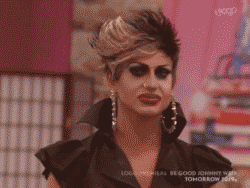
This suggests that the US has been undercounting its LGBTQ+ population by possibly over 50% since 2014, and deploying public health resources, activities, and policies from this deeply inadequate data.
You could even say this violates the Belmont Report’s 3 ethical principles of human subjects research: a) respect for persons, b) beneficence, and c) justice. Really, you could say this.
What matters is that 2021 Pulse data found that LGBTQ+ people reside in every state and zip code. The highest numbers are in these 10 states: Arizona, California, Florida, Georgia, Illinois, New York, North Carolina, Ohio, Pennsylvania, and Texas. It is worth noting that 4 of these states did not collect LGBTQ+ data through the BRFSS that same year.
In sum: We're here. We're queer. We're everywhere.
And new data methods prove that we are very much so in rural areas and red states outside of the Soviet Republic of Pelosistan (FKA San Francisco).
Just don't say Oregon.
Resources:
Behavioral Risk Factor Surveillance System documentation. here
Household Pulse Survey documentation. here
Human Rights Campaign (2021). We Are Here: LGBTQ+ Adult Population in United States Reaches At Least 20 Million, According to Human Rights Campaign Foundation Report. here
Brookings Institute (2023). LGBTQ+ Data Availability: What We Can Learn From Four Major Surveys. here
Office of the Chief Statistician of the United States (2023). Recommendations on the Best Practices for the Collection of Sexual Orientation and Gender Identity Data on Federal Statistical Surveys. here
The Fenway Institute (2019). The Nuts and Bolts of SOGI Data Implementation: A Troubleshooting Toolkit. here
#pink news#statistics#population data#brfss#queering data#queer#household pulse survey#public health#population health#data#lgbtq#lgbt#population statistics#ethics#lgbtqia#lgbtq community#lgbt pride#lgbtqplus#lgbtqiia+#behavioral risk factor surveillance system#healthcare#datascience#data analytics#data analysis
1 note
·
View note
Text
Welcome
I like population health statistics. I also like other things, but don't feel like telling you about it.

Mission: Dumb CDC conducts analyses of research designs and methods used in population health. These deep dives and investigations into topics of interest will be critical, judgmental, and possibly unhelpful.
Vision: A future where Dumb CDC has adequate readership.
Thank you for appreciating the transparency of this post. That is the response the business strategist wanted.
#cdc#public health#statistics#population health#population statistics#mission#vision#goals#dank humor#ethics#human rights#trans rights#lgbtq rights#social justice#racial justice
1 note
·
View note